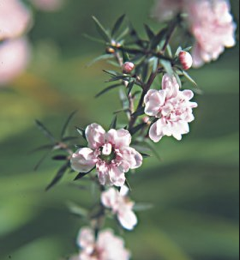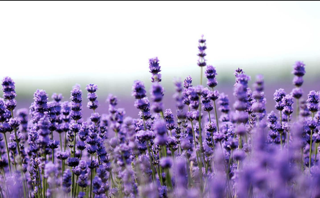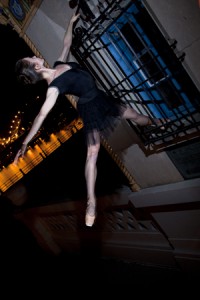
by Emily Kate Long
Summer is my favorite time to dance. The warm weather makes my joints feel looser and my muscles freer. The more humid air gives the floor just the right amount of tack and traction. Pouring sweat halfway through bare feels like my soul is being washed clean. What could be better?
Unfortunately, all that dampness is prime breeding ground for bacteria, and the added friction inside my shoes causes extra blisters to form where I normally don’t get them. It also makes my shoe bag and my locker smell pretty unpleasant!
Maybe you share a barre with a ripe-footed neighbor, or maybe you’re the one with the stinky shoes. Maybe you’ve put on a costume and wondered if its last wearer forgot to put on deodorant. Keeping dance clothing and footwear fresh is important all year long, but especially in summer when the air gets thicker and the sweat runs faster.
My fix for smelly shoes and costumes is an antiseptic spray* I make at home. Here’s my recipe:
- Rinse a perfume or hairspray bottle in hot water a few times to get the residue out. Running it through the dishwasher does the job pretty well.
- Fill the bottle with one part alcohol and two parts distilled water. You can use rubbing alcohol, Everclear, or vodka (note from the editor: dancers 21 or over for the Everclear and vodka please!)
. - Add 30 to 50 drops (two to three teaspoons) of lavender essential oil or tea tree oil. Both of these have antiseptic properties and smell awesome.
- Close the bottle up tight and shake to combine the ingredients. You’ll probably notice that the solution gets warmer when everything is mixed together.
- Spray away!
A few cautions with this stuff:

Always shake the bottle to re-mix before you spray. The oil will separate to the top of the solution.
Essential oils cause some kinds of plastic to deteriorate. I’ve melted more than one of those all-purpose travel size spray bottles by accident. A bottle that already held something like perfume, hairspray, or cleaner will probably hold up fine.
If you plan to use this on fabric, only spray the inside, or test an area to make sure the spray won’t cause any damage.
For feet and shoes, spray after dancing and on the insides of your shoes only. Let the shoes dry out before you put them away. For that matter, let your feet dry out and cool off before you put them away, too!
This spray can also be used safely in pointe shoes. Again, I’ll emphasize letting them dry out for a few minutes before storing. I also use it to sanitize my foot rollers, Yoga mat, and sometimes even my whole locker.
Smelly feet—or just body odor in general—can become a touchy subject in the studio. Having a community bottle of foot spray has become a good way to make light of the subject of stinky shoes. I’ve gotten into the habit of keeping a big bottle of it in my locker that everybody dips into whenever we need it for footwear or dancewear.
With that, I’ll wish all our 4dancers readers a happy, sweaty, fresh-smelling summer.
Here’s to the heat!
*This antiseptic spray is not intended to be used as a treatment for any type of injury or physical problem–it’s just a freshener!

Assistant Editor Emily Kate Long began her dance education in South Bend, Indiana, with Kimmary Williams and Jacob Rice, and graduated in 2007 from Pittsburgh Ballet Theatre School’s Schenley Program. She has spent summers studying at Ballet Chicago, Pittsburgh Youth Ballet, Pittsburgh Ballet Theatre School, Miami City Ballet, and Saratoga Summer Dance Intensive/Vail Valley Dance Intensive, where she served as Program Assistant. Ms Long attended Milwaukee Ballet School’s Summer Intensive on scholarship before being invited to join Milwaukee Ballet II in 2007.
Ms Long has been a member of Ballet Quad Cities since 2009. She has danced featured roles in Deanna Carter’s Ash to Glass and Dracula, participated in the company’s 2010 tour to New York City, and most recently performed principal roles in Courtney Lyon’s Sleeping Beauty, The Nutcracker, and Cinderella. She is also on the faculty of Ballet Quad Cities School of Dance, where she teaches ballet, pointe, and repertoire classes.




